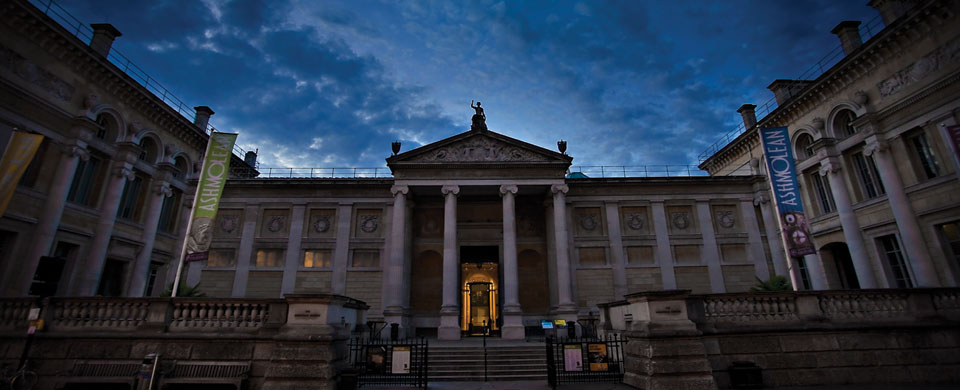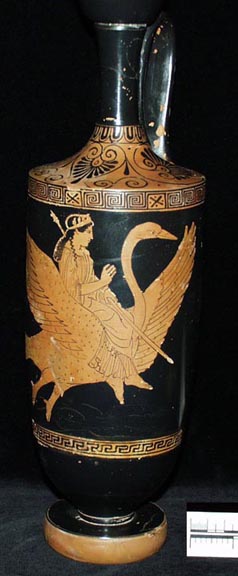Department of Antiquities
 |
Ashmolean Museum of Art and Archaeology |
|
|
| Presentations | |||
| Ancient
Cyprus in the Ashmolean Museum |
| Highlights of the Collection: Aphrodite, Female Figurines and Cyprus | |
| Aphrodite, Female Figurines and Cyprus: The Iron Age, Aphrodite and Paphos |
|
Vases such as this, with long narrow necks, are known as lekythoi (oil-flasks).
They came to Cyprus as a result of trade links with the Greek mainland.
This lekythos, from Polis tis Khrysokhou, dates to the 5th century BC
when Cyprus was under Persian control. The pottery type is called Athenian
red-figure ware and the design on it depicts Aphrodite riding over waves
on a swan or goose. The goddess is wearing Ionic style clothing and
her hair is tied back under a diadem. The Second Homeric hymn to Aphrodite
says:
|
|||
| Attic red-figure lekythos with image
of Aphrodite riding a swan, from Tomb 57 at Arsinoe (Marion) donated by Cyprus Exploration Fund (AN1891.451) |
|||
| Previous
Page Late Bronze Age & COpper |
Aphrodite Home | Next
Page Iron Age II |
|
| Ancient Cyprus Home | Top of Page | ||


 During
the Iron Age (c.1050-325 BC) there was an influx of foreign influences
in Cyprus (the Phoenicians, Greeks, Assyrians, Egyptians and Persians).
All brought elements of their cultures to the island, including the
Greek gods Zeus, Hera, Artemis, Athena, Apollo and Aphrodite. It was
at this stage in the history of Cyprus that the sanctuary at Paphos
was dedicated to Aphrodite. Homer and Hesiod recount how she arose out
of the sea there. Her Greek name even means 'the foam risen',
During
the Iron Age (c.1050-325 BC) there was an influx of foreign influences
in Cyprus (the Phoenicians, Greeks, Assyrians, Egyptians and Persians).
All brought elements of their cultures to the island, including the
Greek gods Zeus, Hera, Artemis, Athena, Apollo and Aphrodite. It was
at this stage in the history of Cyprus that the sanctuary at Paphos
was dedicated to Aphrodite. Homer and Hesiod recount how she arose out
of the sea there. Her Greek name even means 'the foam risen',